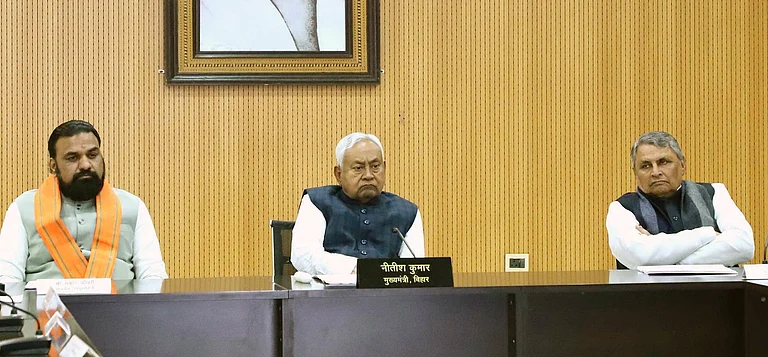When it comes to shaping the future of autonomous vehicle technology and high-performance data analysis tools, Nishant Shrivastava stands out as both a pioneering engineer and an active mentor in the global tech community. With over 13 years at The MathWorks, Shrivastava has transformed not just how complex simulations are run, but also how young innovators and early-career engineers approach problem-solving.
Engineering Excellence in Simulation and Data Visualization
As Principal Software Engineer at The MathWorks, Shrivastava leads the architectural evolution of the Simulation Data Inspector (SDI), a flagship visualization tool widely used in aerospace, defense, automotive, and robotics. Under his leadership, SDI shifted from a single-instance to a multi-instance architecture—an upgrade that allowed downstream teams to integrate it seamlessly into their products. The result? Autonomous vehicle developers, aerospace engineers, and robotics experts can now access high-fidelity data visualization in more flexible, workflow-friendly environments.
Shrivastava’s contributions extend beyond architectural innovation. His work on performance optimization—delivering over 50% speed improvements for large-scale data import and export—has directly addressed the challenges faced by Fortune 500 clients, from Ford and GM to John Deere. A particularly impactful feature he helped deliver allows users to visualize and analyze differences between massive datasets, enabling engineering teams to fine-tune control systems with unprecedented precision.
Published Thought Leadership
Shrivastava’s influence also reaches the global research community. His co-authored SAE paper, Battery Pack Modeling, Simulation, and Deployment on a Multicore Real-Time Target, has been cited in numerous IEEE and SAE publications. He has further contributed two IEEE technical papers: Robust Urban Navigation for Autonomous Vehicles using Vision-Based Segmentation Graph Attention and Hierarchical Learning and Path Aggregation Network with You Only Look Once Version 8 for Real-Time Object Detection in Autonomous Vehicles.
Most recently, he authored Automation for the Self-Driving Car: How to Analyze Data for Better Performance Metrics, published by Analytics Magazine (INFORMS). Each publication reflects a blend of technical mastery and an understanding of how emerging technologies integrate into real-world applications.
Judging and Mentorship: Building the Next Generation of Innovators
Shrivastava’s dedication to the tech community extends far beyond his corporate role. As a judge and mentor for global hackathons such as the Technovation Challenge and Think With Earth, he has guided young entrepreneurs and students in developing AI-powered, sustainable, and socially impactful projects. His mentorship approach combines technical feedback with strategic advice, ensuring participants not only refine their prototypes but also build the confidence to present their ideas effectively to diverse audiences.
In his role as a mentor at The MathWorks, Shrivastava supports junior engineers in mastering complex codebases and software architecture principles. He conducts peer code reviews and shares best practices for scalable design—skills that many engineers cite as pivotal to their professional growth.
Impact: Engineering Solutions with Global Reach
The impact of Shrivastava’s work is felt across industries and continents. His advancements in simulation infrastructure are enabling automotive companies to validate autonomous driving systems faster, reducing time-to-market for safer vehicles. In aerospace, engineers are leveraging his visualization tools to model and test systems before physical prototypes ever leave the ground—saving millions in R&D costs.
In education and innovation spaces, his mentorship has directly influenced dozens of hackathon projects, some of which have gone on to secure funding, win international awards, and be deployed in real-world environments. For participants in initiatives like the Technovation Challenge, his insights have helped bridge the gap between classroom learning and applied technology.
What sets Shrivastava apart is the scale of his influence. His technical solutions do not exist in isolation—they integrate into systems used daily by thousands of engineers. And his mentorship is not confined to a single event—it builds enduring skills in problem-solving, critical thinking, and collaboration. This combination of technical depth and human investment makes his work uniquely impactful.
Vision: Shaping the Future of Autonomous and Data-Driven Systems
Looking ahead, Shrivastava envisions a future where autonomous systems are not just technically advanced but also ethical, transparent, and accessible. He believes that the convergence of AI, IoT, and simulation technologies will unlock breakthroughs in transportation, sustainability, and urban planning—provided that engineers remain mindful of societal needs and long-term impacts.
A strong advocate for cross-disciplinary collaboration, he foresees tools like the Simulation Data Inspector evolving into even more modular, AI-enhanced platforms capable of real-time, predictive decision-making. This could mean autonomous vehicles that adapt to changing traffic conditions instantly, drones that navigate complex airspaces autonomously while respecting environmental constraints, and industrial systems that optimize energy usage without human intervention.
Equally, Shrivastava’s vision extends to the people building these systems. He champions early exposure to advanced tools for students, democratizing access to simulation and AI resources so that innovation is not restricted to large corporations. His work with hackathons, universities, and tech incubators is part of this broader mission—ensuring the next generation of engineers is equipped to create technologies that serve both economic and human needs.
“Innovation thrives when technical rigor meets a sense of purpose,” Shrivastava says. “The future belongs to engineers who can combine hard data with empathy, foresight, and a willingness to mentor others.”
A Legacy in the Making
From architecting high-performance simulation tools to mentoring aspiring technologists, Nishant Shrivastava’s career is a testament to the power of combining technical innovation with community engagement. His impact spans industries, his vision bridges present challenges with future possibilities, and his dedication ensures that the next wave of technology leaders will be ready to meet them.
In the world of autonomous systems, where progress is measured in milliseconds and breakthroughs are forged through collaboration, Shrivastava is both a leader and a catalyst—proving that engineering excellence is not just about building better systems, but also about building better people.


























